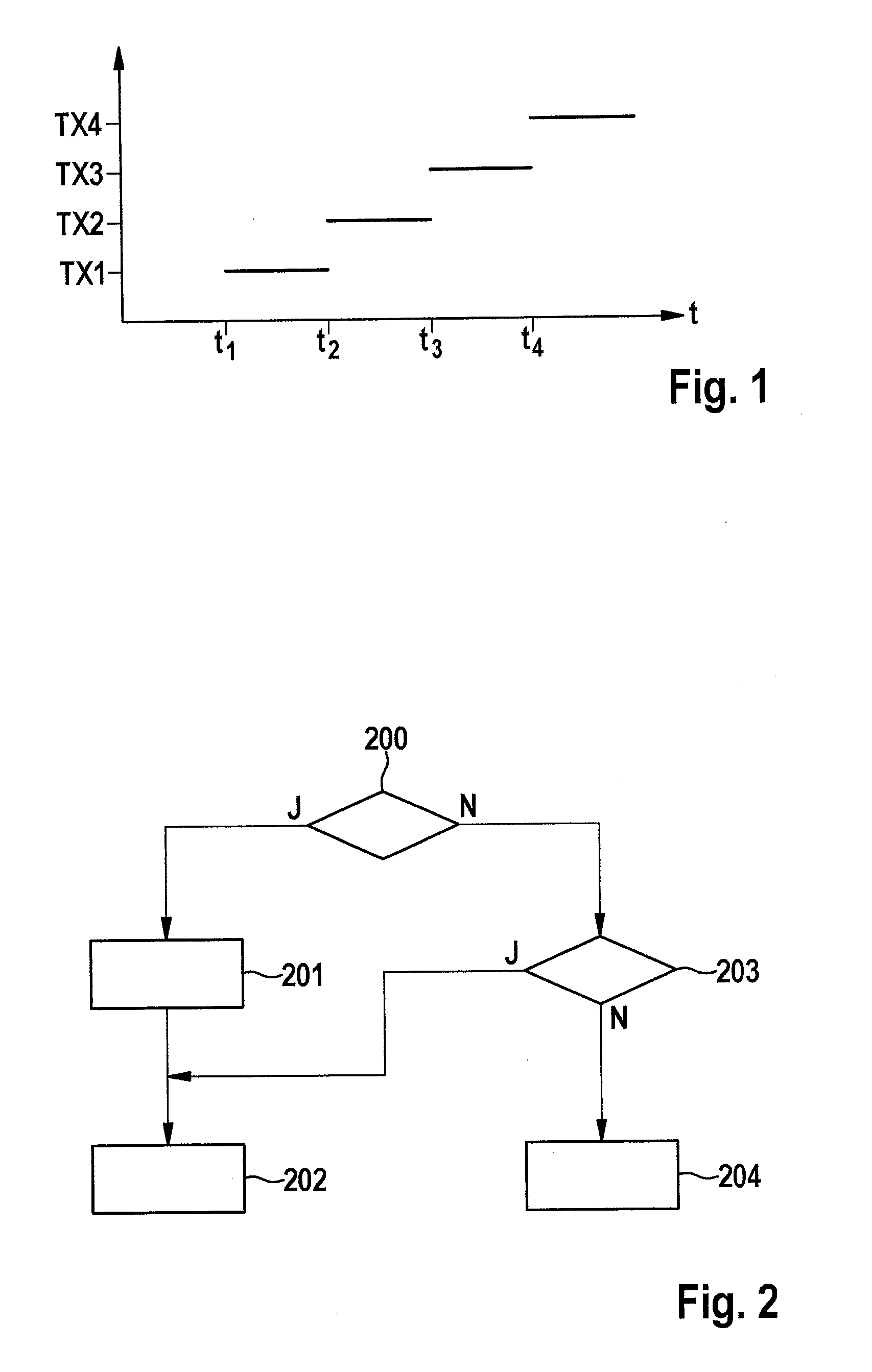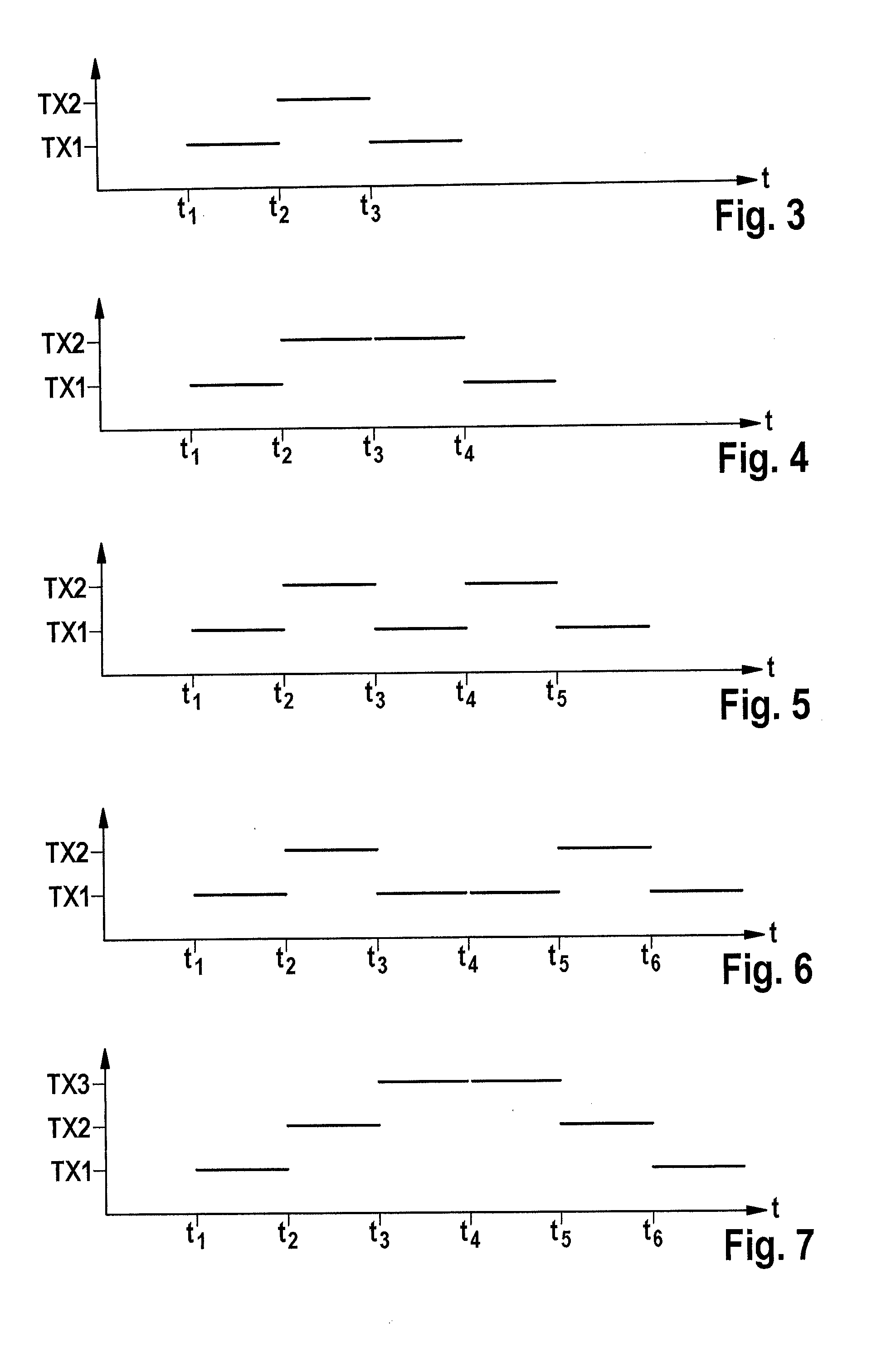Method for operating a MIMO radar
a technology of mimo radar and operating method, which is applied in the direction of using reradiation, measuring devices, instruments, etc., can solve the problems of inability to use at all, system can only carry out inaccurate angle estimates, and the doa estimate of such a system can be poorer than the utilization of an individual transmitting antenna
- Summary
- Abstract
- Description
- Claims
- Application Information
AI Technical Summary
Benefits of technology
Problems solved by technology
Method used
Image
Examples
Embodiment Construction
[0047]In order to allow the advantages of MIMO radar to be utilized, the transmitted signals that are used should preferably be orthogonal to one another, i.e. should exhibit no dependencies on one another. There are in principle three possibilities for this, but all have specific disadvantages:[0048]code multiplexing in fast or slow time has a high level of technical complexity and only limited orthogonality;[0049]frequency multiplexing produces a wavelength-dependent phase shift and Doppler shift;[0050]time multiplexing, in a context of object motions between switchovers, results in different phases, complicating the subsequent angle estimate.
[0051]Closer consideration will be given hereinafter exclusively to the time multiplexing method, since it can be implemented relatively simply in terms of circuit technology and is thus economical. The present invention proposes a time multiplex switching concept which is notable for the fact that object motions between switchovers of the tr...
PUM
 Login to View More
Login to View More Abstract
Description
Claims
Application Information
 Login to View More
Login to View More - R&D
- Intellectual Property
- Life Sciences
- Materials
- Tech Scout
- Unparalleled Data Quality
- Higher Quality Content
- 60% Fewer Hallucinations
Browse by: Latest US Patents, China's latest patents, Technical Efficacy Thesaurus, Application Domain, Technology Topic, Popular Technical Reports.
© 2025 PatSnap. All rights reserved.Legal|Privacy policy|Modern Slavery Act Transparency Statement|Sitemap|About US| Contact US: help@patsnap.com



